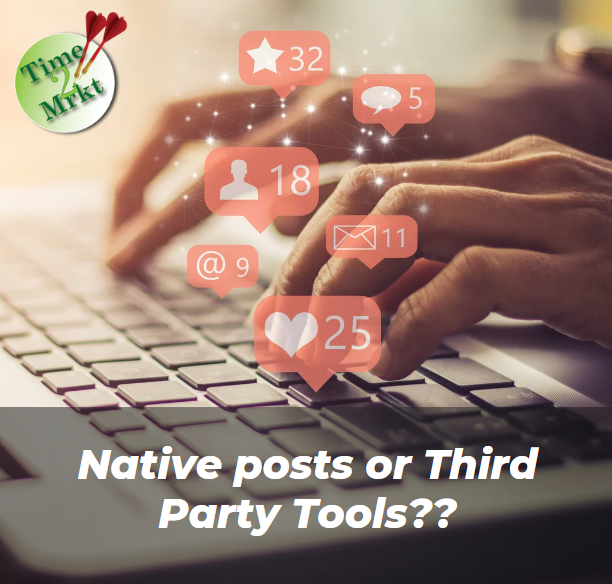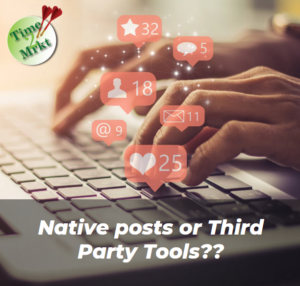What is better for you and social posting – native posts or third party tools posting?
Recently, I found out how to schedule a post in LinkedIn without having to use a third party tool to do that for me. I then went looking for Twitter and found that. Facebook and Instagram already had their game going on. This all got me to thinking about whether I should use native posts or third party tools to schedule my social posts. Here are the pros and cons for each.
Posting Social Media Natively
Pros:
- Platform-Specific Features: Native posting often gives you access to the latest features and tools specific to each social media platform.
- Improved Engagement: Native posts may be prioritized in platform algorithms, potentially leading to better engagement.
- Real-Time Updates: Immediate posting ensures that your content is in sync with current trends and real-time events.
- Authenticity: Posts made natively can feel more authentic and less automated, which may resonate better with your audience.
- Direct Support: Easier access to platform-specific support and troubleshooting if issues arise.
Cons:
- Time-Consuming: Managing multiple platforms natively can be time-consuming and less efficient.
- Limited Scheduling: Many native platforms have limited or no scheduling capabilities, requiring manual posting.
- Lack of Analytics: Some native platforms offer limited analytics and reporting compared to third-party tools.
- Inconsistent Branding: Managing each platform separately can lead to inconsistent branding and messaging.
- No Centralized Management: Difficulty in managing and monitoring all your social media accounts from a single interface.
Using a Third-Party Tool
Pros:
- Centralized Management: Allows you to manage multiple social media accounts from a single dashboard, saving time and effort.
- Scheduling: Enables you to schedule posts in advance, allowing for consistent posting even outside of business hours.
- Analytics: Offers advanced analytics and reporting features that provide deeper insights into performance across platforms.
- Content Planning: Facilitates better content planning and coordination with editorial calendars and other planning tools.
- Efficiency: Streamlines the process of creating, managing, and optimizing social media content.
Cons:
- Cost: Many third-party tools come with a subscription fee or additional costs.
- Limited Platform Features: Some platform-specific features or tools may not be available through third-party tools.
- Potential for Automation Overuse: Over-reliance on automation can lead to posts that seem less personalized and more robotic.
- Integration Issues: Sometimes, third-party tools may face integration issues or have compatibility problems with social media platforms.
- Learning Curve: Requires time to learn and master the third-party tool’s interface and functionalities.
Both approaches have their strengths and weaknesses, so the choice between native posting and using a third-party tool will depend on your specific needs, resources, and goals.
If you don’t want to do any of it, contact me a call and we can discuss how we can take over the task for you.
